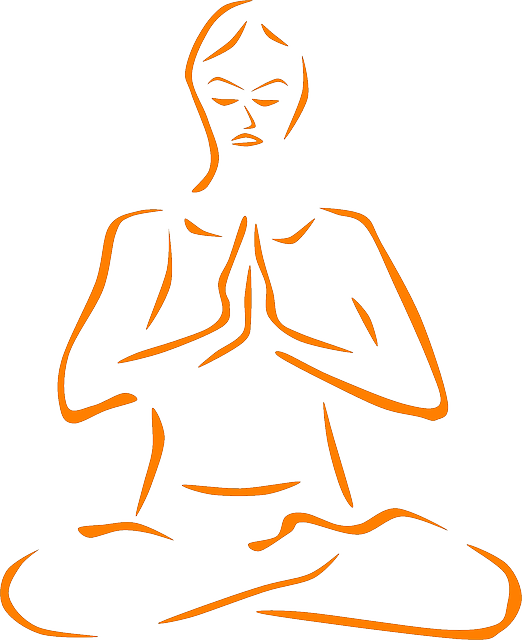Yoga for posture is a holistic solution addressing chronic pain and reduced mobility caused by alignment issues stemming from poor posture or muscle imbalances. Combining physical exercises, breathing techniques, and mindfulness, yoga aligns the skeleton, relieves pressure on vulnerable areas, and promotes long-term postural health. Its gentle nature makes it accessible to all ages and fitness levels, emphasizing individual progress and body awareness. Regular practice complements traditional physical therapy by strengthening muscles, improving joint mobility, and cultivating mindful body awareness, with specific poses and controlled breathwork targeting optimal spinal alignment. Integrating manual therapy, exercise prescription, and education enhances these benefits, providing comprehensive correction for conditions like scoliosis and hip dysplasia.
“Uncover the secrets to correcting alignment issues with physical therapy, a holistic approach that goes beyond traditional methods. This comprehensive guide explores how misalignments can impact your body and offer a transformative journey towards optimal health. From understanding the root causes to discovering targeted exercises, we delve into effective strategies. Yoga emerges as a powerful tool for posture correction, combining flexibility and strength training. Discover how physical therapy techniques, when integrated, can provide exceptional results, offering a personalized roadmap to a healthier, more aligned you.”
- Understanding Alignment Issues and Their Impact on the Body
- Yoga as a Holistic Approach to Posture Correction
- Targeted Exercises for Specific Alignment Problems
- Integrating Physical Therapy Techniques for Optimal Results
Understanding Alignment Issues and Their Impact on the Body

Alignment issues refer to deviations from the body’s natural structural integrity, often resulting in postural imbalances. These problems can stem from various factors, including poor posture, muscle asymmetries, compensatory mechanisms due to injuries, or even genetic predispositions. When left unaddressed, misalignments can have significant implications for overall health and well-being.
Improper alignment puts excessive strain on certain muscles and joints, leading to chronic pain, reduced mobility, and an increased risk of injury. For instance, a rounded shoulder posture can cause tension in the neck and upper back, while a collapsed lumbar spine may result in lower back pain. Yoga for posture offers a holistic approach to addressing these concerns by combining targeted exercises with mindfulness practices to improve body awareness and restore balance. Through specific poses and breathing techniques, yoga helps align the skeleton, relieve pressure on vulnerable areas, and promote long-term postural health.
Yoga as a Holistic Approach to Posture Correction

Yoga offers a holistic approach to posture correction, focusing on aligning the body through a combination of physical postures, breathing techniques, and mental awareness. This ancient practice targets not just the muscles and bones but also the mind, promoting a balanced and harmonious state that supports optimal spinal alignment. By combining specific yoga poses with controlled breathwork, practitioners can gently yet effectively address misalignments, strengthen supporting muscles, and increase flexibility.
The gentle nature of yoga makes it suitable for people of various fitness levels and ages. Unlike some intense physical therapies, yoga emphasizes patience and progress at an individual’s pace. Through regular practice, individuals can develop a deeper understanding of their bodies, fostering better posture awareness and long-term behavioral changes that complement traditional physical therapy techniques.
Targeted Exercises for Specific Alignment Problems

Targeted exercises play a crucial role in correcting alignment issues, offering a holistic approach often enhanced by practices like yoga for posture. By focusing on specific muscle groups and movements, physical therapists can develop tailored routines that address imbalances and misalignments. These exercises range from simple postural adjustments to complex dynamic stretches, each designed to strengthen weak muscles, lengthen tight ones, and improve joint mobility.
For instance, in cases of scoliosis, targeted exercises might include specific back extensions and core stabilizers to reinforce the spine’s natural curvature. Similarly, for individuals with hip dysplasia, a combination of internal and external rotations, along with gluteal activation exercises, can help realign the hip joint and restore proper gait patterns. Yoga for posture provides additional benefits by promoting mindfulness, improving flexibility, and cultivating body awareness—all essential components in achieving and maintaining corrected alignment.
Integrating Physical Therapy Techniques for Optimal Results

Integrating various physical therapy techniques is key to achieving optimal results in correcting alignment issues, especially when considering yoga for posture. Therapists often employ a combination of manual therapy, exercise prescription, and education to address structural imbalances. Manual therapy techniques such as joint mobilization and soft tissue manipulation can help relax tight muscles, improve range of motion, and facilitate better alignment. This hands-on approach not only provides immediate relief but also prepares the body for subsequent exercises.
Exercise plays a pivotal role in maintaining and enhancing correct alignment. Yoga poses specifically designed to improve posture can strengthen core muscles, stretch tight areas, and increase overall body awareness. When integrated into a comprehensive physical therapy regimen, these practices promote sustainable changes. Education is another critical component; understanding the causes of alignment issues empowers individuals to actively participate in their care, making adjustments in daily activities to prevent future problems.
Physical therapy offers a comprehensive solution for addressing alignment issues, combining targeted exercises with holistic approaches like yoga to achieve optimal results. By integrating these methods, individuals can not only correct postural problems but also enhance overall body awareness and flexibility. Yoga for posture correction provides a gentle yet effective way to improve alignment, making it a valuable tool in any physical therapy regimen.
